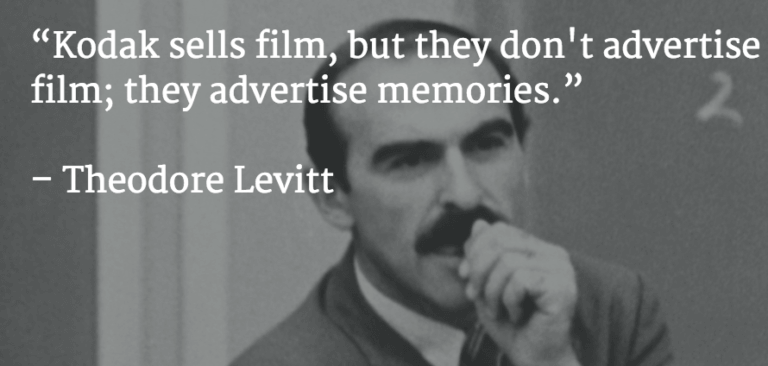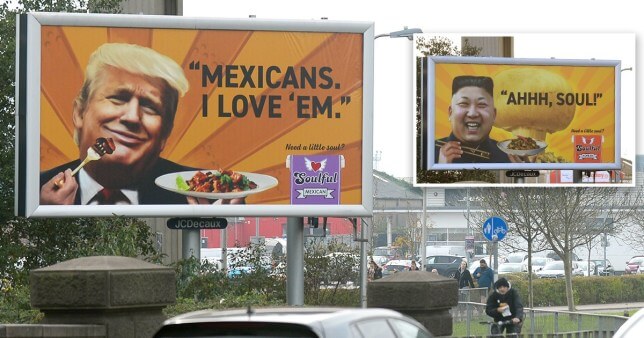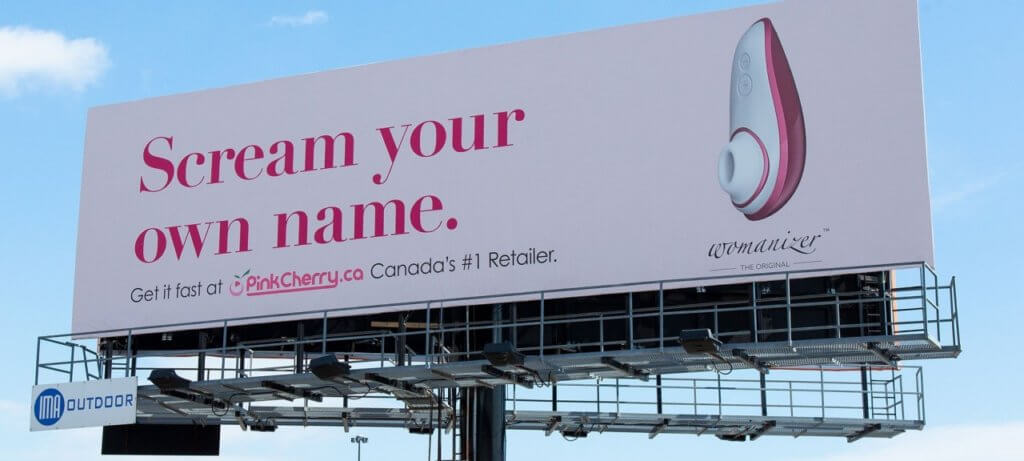
Being human means we are emotional beings who are constantly balancing the emotional and logical inner workings of our brain. This is especially true when it comes to the decision-making process. The right side of our brain is responsible for the emotions that can sometimes drive us to make impulsive buying decisions, while the left side keeps us in check and constructively weighs out the pros and cons before jumping in. However, the emotions we feel towards a product or service significantly outweighs the logically calculated purchase. Humans are often ruled by their emotions and tend to attach meaning to material possessions that either make them feel a certain emotion, are associated with a psychological need, or resemble who they want to be perceived as. Louis Sawyer, the chief strategy officer for the ad agency Brunner, believes that we are defined by the brands we choose. To prove his point, he asked students at Emory University to describe a friend using only brands they know and then have their mutual friends guess who they are talking about. To everyone’s surprise, the students were actually successful in doing so. Humans have the tendency to engage best with brands that they can emotionally connect with. This is why emotions are at the heart of the relationship consumers have with brands. They have the power to drive both our unconscious and conscious decisions. Psychology is a primary principal to all successful marketing campaigns as brands are able to reinforce their message in the minds of consumers. More specifically, OOH (Out-of-Home) advertisements are most capable of engaging with people, creating familiarity towards a brand, and triggering emotional responses that connect with consumers.
The Psychological Impact of OOH Ads
Using OOH advertising can help build brands, engage consumers, and boost profits. But OOH ads have a hidden power that consumers are not necessarily aware of – the power of our unconscious mind. The brain processes billboard data whether we are consciously viewing it or not. According to the Outdoor Advertising Association of America, 98% of Americans indicated that they will notice OOH ads, including mobile truck ads and billboards, and consciously process the messaging. The larger the billboard, the higher the engagement rate because of its ability to capture high volumes of traffic. As for the bypassers who aren’t actively paying attention to outdoor ads, the brain still registers them on a subconscious level. Our brains absorb the information of our surroundings without us even knowing. The eye has a predetermined method of perceiving billboards, it naturally moves across posters in a Z shaped line, which means the content that’s situated at the top, middle, and bottom are consumed more easily than those with scattered content. Color also plays a major role in consciously and unconsciously attracting the eye towards an ad. Designs that burst with vivid and contrasting colors can evoke emotional responses that will arouse lasting impressions. High color contrast can improve OOH advertising recall by 38 percent, which is why companies make strategic color choices that can influence the minds of consumers depending on the key message of the ad. In a research conducted by Harvard Business School, Professor Gerald Zaltman found that 95% of purchase decisions are made unconsciously and then are justified by logic afterwards. Consumers react to unconscious stimuli from advertisements and respond to basic feelings and intuition by impulsive purchasing (the emotional part of the brain).
Another psychological factor that affects our buying decisions is our natural instinct to gravitate towards items that are within our comfort zone. Consumers heavily prioritize brands that they’re already familiar with. Aside from the fact that OOH is one of the most trusted advertising mediums, its ability to create familiarity in the minds of consumers sets it apart. When consumers are exposed to a brand everyday on a billboard, they will be able to easily recall it when they go to purchase that product. The more familiar they are with the brand, the more likely they are to purchase it. A study using a computational neuroscience software program found evidence for the presence of an attention capture threshold that improves memory when an ad crosses that threshold. Brand familiarity was among the top three factors that help increase recognition rates.
Advances in neuroscience theory and practice are making it possible to further explore the emotions that affect consumer buying decisions. By measuring neurological and biological reactions (heart rate, sweat, posture, facial reactions, and electrical impulses in regions of the brain), consumer reactions can determine the success of an ad campaign. Findings from a study of 100 ads across 25 brands in the consumer-goods industry showed that ads with above-average scores on a neuroscience-based copy test, generated a 23% lift in sales. Most feelings experienced by humans are associated with psychological needs that range from basic requirements, such as thirst and hunger, to deeper ones like the desire for belonging within a society. In all cases, OOH ads can evoke powerful emotions that impact the human mind, which can then result in higher conversion rates.
Types of Emotions in OOH Advertising
There are six universal emotions that advertisers use in their OOH campaigns to trigger a strong response.
1. Happiness
Advertisers want consumers to associate their brand with feeling good. Happiness is a broad emotion that can stem from any positive experience that will resonate with consumers such as love, family, adventure, and self-acceptance. Most brands can integrate these emotions into their advertisements even if the product itself does not directly relate to that emotion. For example, brands that sell luxury items can make viewers feel a desire to gain the confidence and prestige that the advertisement is portraying. Even if the ad may not be directly expressing happiness as a concept, the emotions it triggers might be self-confidence, which for some, represents happiness. A more direct approach to expressing happiness is Coca-Cola’s series of campaigns that have consistently focused on happiness as the brand message, with taglines such as ‘Share a Coke’, ‘Open Happiness’, ‘Choose Happiness’, and ‘ Taste the Feelings’.

Coca-Cola also released an ad in Europe as part of the “Choose Happiness” campaign that displayed an LGBTQ+ family enjoying a Coke with a tagline that read, “We choose happiness over tradition.- the Van Bergen family.” To make the campaign even more emotionally impactful, Coca-Cola went above and beyond to create a heartfelt advertisement that not only encouraged positivity, acceptance, and unity but also factored in the element of surprise – another key emotion used in advertising.
2. Anger
Anger is an emotion that brands would typically not want to be associated with, however its power lies in its ability to light a fire in consumers, agitating them enough to want to share their annoyance with others, thus creating a high level of engagement. Some brands are using the shock and outrage factor to their advantage, making their ads stand out and creating a rebellious reputation for themselves. However, brands need to be careful when applying this tactic as it may backfire if done incorrectly. If consumers feel that the ad is not authentic to the brand’s identity and is being used only as a way to seek attention, it might affect the brand’s credibility, or worse, be ignored completely. In most cases, advertisers know when an ad will be controversial. Some will love it and some will hate it, but people will be talking about it – and that’s the purpose of it all.

The Soulful Food Company placed an OOH advertisement displaying North Korean dictator, Kim Jong Un holding a bowl of food with the tagline, ‘Ahhh, Soul’. Some people found it funny, whereas others complained that it was racist and the ad was eventually removed. However, what angered bypassers even more was the ad that replaced it in November 2020 that displayed Donald Trump with a caption that read, “Mexicans. I love ‘em”. Many expressed their anger on social media platforms saying the ad was racist and the timing was poorly thought out. On the other hand, many found the ad to be brilliant. The Soulful Food Company responded by saying the Trump ad was satirical and intended to ‘highlight the need for more soul’. Either way, the company received a sizable mention on social media platforms with strong opposing emotions towards the ad.
3. Disgust
Disgust is another strong emotion that can serve many purposes for advertisers. Most advertisements use disgust to purposely make people feel bad about the choices they are making in order to offer them a solution such as medications, diet plans, and “miracle” remedies. Advertisements that evoke disgust towards oneself may be perceived as unethical. However, if it is portrayed as a helpful reminder that expresses concerns, it can be a successful call to action. For advertisers, it can be challenging to attract bypassers with an image that is too revolting or disturbing that it risks the chances of viewers turning away before reading the message. Advertisers must find a suitable balance between being impactful enough to trigger the emotion, but also tolerable to look at.

A public health campaign by The Adolescent Health Project was created to raise awareness about the increasing STD rates. The witty catchphrases, “His and Herpes”, “Ignorance is blisters”, and “What’s the warts that could happen?”, were featured on billboards with the letters designed to resemble rotten and sickly skin. The purpose of the ad was to shock people in order to spike a conversation about an uncomfortable topic and direct them towards medications and preventative measures that can help stop the spread of STDs.
4. Sadness
Sadness is used to evoke a strong sense of compassion and empathy towards a cause. This emotion is most commonly used in ads whose goal is to bring awareness to social issues. It is often challenging for organizations to gain the trust of consumers, as people are often hesitant towards giving donations on platforms they don’t trust or know anything about. When people make donations they like to experience the satisfaction of lending a helping hand. This is why many organizations are using experiential OOH to offer people a unique experience when donating. Organizations are focusing more on creating ads that not only bring awareness to a cause, but that adhere more towards the humanitarian aspect with moving messages that inspire change.

German relief organization, MISEREOR, created The Social Swipe Campaign, which was the first interactive donation poster that accepts credit cards and is not only used to donate but is also part of the interactive experience. The outdoor posters have dual screens that show imprisoned hands of children in the Philippines with the words “Free Them!” written across the screen. In the center runs a credit card swiper which cuts through the image to free the hands when a donation is made. Another poster displays a loaf of bread that slices a piece with the swipe of a credit card and includes the caption, “Feed them!”, providing a daily meal for a family in Peru. The ad used emotion in a clever way rather than displaying heartbreaking imagery that will only exert the feeling of sadness. The campaign was able to take a sad reality and incorporate hope into it.
5. Fear
Fear is one of the most powerful emotions and is often hard to ignore. Using fear in advertisements is aimed at reducing harmful behavior such as smoking, drinking and driving, unsafe sexual practices, alcohol abuse, and climate change. Organizations and companies use fear to promote change for the greater good. However, some people are harder to impact when using words like, “smoking kills”, which seem to have lost its effectiveness. Advertisers are coming up with stronger messages and disturbing imagery to instill enough fear to provoke change.

Manitoba Public Insurance created a chilling “Don’t Drink and Drive” ad of a young man who’s been in a life-threatening accident and that’s lying on a stretcher with the question, “Does Your Future Look Bright?”. Residents expressed their concern that the ad was too graphic and disturbing, even taking the case to court. Perhaps the goal of the ad was exactly that. If the ad was less disturbing and more appropriate to viewers, it wouldn’t have been as impactful. Fear is a heavy emotion that nobody wants to feel, so when advertisers make use of it, they risk receiving negative feedback. But if the ad keeps bypassers up all night, then the goal has been achieved.
6. Surprise
Surprise can be a combination of many emotions at once. It stimulates a viewer using unexpected or unusual design elements. A surprised viewer will experience a variety of emotions when they consume the message. The message can either be positive or negative, but the “shock factor” itself is what elevates the power of the ad. A shocking ad usually consists of a controversial topic such as, politics, sex, religion, violence, racial issues, social and gender issues, stereotypes, or a provocative factor. Shock advertising is designed to purposely startle or offend viewers by violating social norms. It’s a way for advertisers to guarantee publicity to break through the noise. This is the riskiest strategy to apply and advertisers know that viewers will be shocked, but there’s no telling what emotions will arise after that. Brands may risk overdoing it and cause a scandal to ensue from their very own ad. But if the advertisement can surprise its audience in a creative and effective way, it can have people talking about it for years to come.

Wow Tech Group’s sex toy brand ‘Womanizer’, alongside advertising agency, The Garden, designed a billboard on one of Toronto’s busiest highways with the provocative headline, ‘Scream your own name’. The billboard was up for 3 weeks, breaking the record for the longest billboard of its kind in North America, to not be taken down. It’s no surprise why the billboard caught so much attention and publicity. Many had mixed views about the billboard, some felt it was inappropriate and awkward, while others praised it for breaking the rules. WOW Tech Group marketing manager Stephanie Keating commented, “When you are in the business of promoting women’s sexual pleasure and all the benefits that go with that, you’re used to being rejected.” The shock factor was more towards the nature of the brand being the first to use OOH to advertise. Women’s sex toys are typically denied approval while provocative ads for men’s sexual health continue to appear without much controversy. This evoked more emotions about double standards, making the ad more of a success amongst women who want to break the social norms and be openly proud of their sexuality.
The Bottom Line
Advertising has the power to take you on a rollercoaster of emotions, but what appeals to you the most can say a lot about who you are. Psychology is a major part of advertising, it ties all of our thoughts, behaviors, and emotions together and exposes our true needs and desires which are then revealed through our purchasing habits. Advertisers understand the power of emotions when combined with an impactful OOH ad that amplifies them. Its unmatched ability to reach consumers on an unconscious level, insight familiarity, and cause strong emotional responses makes it the most memorable form of engagement. “Great advertising is the expression of deep emotional sincerity” – Storm Jameson.


